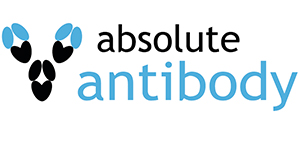Anti-IgG1 Fc (TP878)
Anti-IgG1 Fc [TP878], Recombinant, IgG1-Fc Fusion, Human
SKU
ABAAb01437-10.159
Packaging Unit
200 μg
Manufacturer
Absolute Antibody
Availability:
loading...
Price is loading...
CloneID: TP878
Antigen Long Description: This antibody was raised by immunising alpacas with 1.0 mg polyclonal mouse IgG. Subsequently, the generation of nanobody immune libraries and the selection of antigen-specific nanobodies by phage display from these libraries were performed.
Buffer Composition: PBS with 0.02% Proclin 300.
Chimeric Use Statement: This chimeric rabbit antibody was made using a variable domain sequence of the original VHH format, for improved compatibility with existing reagents, assays and techniques.
Available Custom Conjugation Options: AP, HRP, Fluorescein, APC, PE, Biotin Type A, Biotin Type B, Streptavidin, FluoroProbes 647H, Atto488, APC/Cy7, PE/Cy7
Specificity Statement: This antibody recognises Fc fragment of the IgG1.
Application Notes (Clone): Anti-IgG nanobodies often perform more efficiently than polyclonal secondary antibodies in various experimental assays. Therefore, they are recommended for various experimental procedures. Anti-IgG nanobodies were shown to be more sensitive during Western blots when conjugated with different molecules (HRP, fluorophores etc.) (Pleiner et al., 2018). Furthermore, combination of two distinct nanobodies for immunofluorescence labelling provided exceptionally clean and strong signal, unprecedented among monovalent secondary antibodies (Pleiner et al., 2018). Additionally, using such an antibody allows skipping two-step incubation procedures during immunostaing as the nanobody can be first incubated with a primary antibody and this conjugate might be added to the cells in a one-step procedure (Pleiner et al., 2018). Finally, such nanobodies have been recommended as very effective for colocalisation studies when more than one fluorophore is needed (Pleiner et al., 2018).
Antigen Long Description: This antibody was raised by immunising alpacas with 1.0 mg polyclonal mouse IgG. Subsequently, the generation of nanobody immune libraries and the selection of antigen-specific nanobodies by phage display from these libraries were performed.
Buffer Composition: PBS with 0.02% Proclin 300.
Chimeric Use Statement: This chimeric rabbit antibody was made using a variable domain sequence of the original VHH format, for improved compatibility with existing reagents, assays and techniques.
Available Custom Conjugation Options: AP, HRP, Fluorescein, APC, PE, Biotin Type A, Biotin Type B, Streptavidin, FluoroProbes 647H, Atto488, APC/Cy7, PE/Cy7
Specificity Statement: This antibody recognises Fc fragment of the IgG1.
Application Notes (Clone): Anti-IgG nanobodies often perform more efficiently than polyclonal secondary antibodies in various experimental assays. Therefore, they are recommended for various experimental procedures. Anti-IgG nanobodies were shown to be more sensitive during Western blots when conjugated with different molecules (HRP, fluorophores etc.) (Pleiner et al., 2018). Furthermore, combination of two distinct nanobodies for immunofluorescence labelling provided exceptionally clean and strong signal, unprecedented among monovalent secondary antibodies (Pleiner et al., 2018). Additionally, using such an antibody allows skipping two-step incubation procedures during immunostaing as the nanobody can be first incubated with a primary antibody and this conjugate might be added to the cells in a one-step procedure (Pleiner et al., 2018). Finally, such nanobodies have been recommended as very effective for colocalisation studies when more than one fluorophore is needed (Pleiner et al., 2018).

 Deutsch
Deutsch







